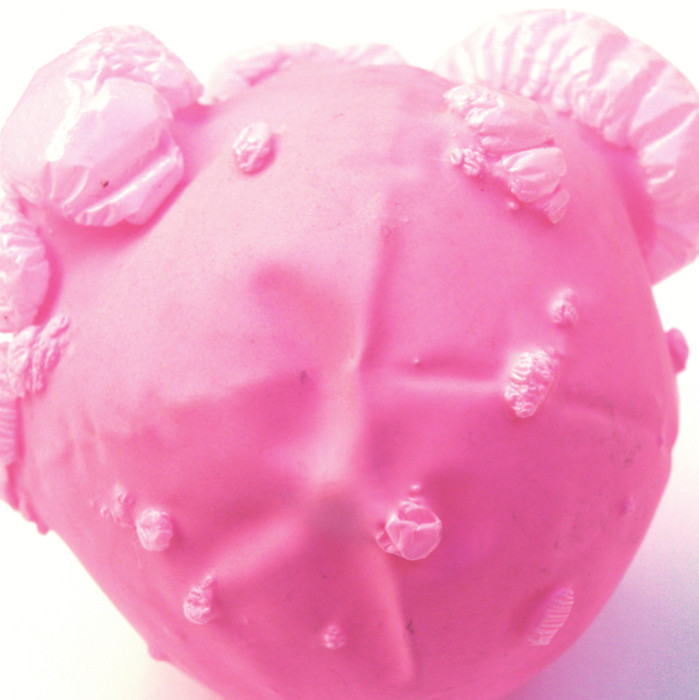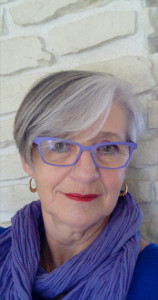
Discover the contemporary work of Gwen Gérard

Gwen Gérard was born in Nantes, after a disappointing experience at the Met de Peningehn workshop in Paris 6th, which was too academic, she enrolled at the Saint Charles faculty of Paris I, where she took classes with Michel Journiac.
In the mid-1980s, she began to exhibit in alternative venues (Génie de la Bastille, Art Cloche etc.), Parisian galleries (Espace Trans-Art, Galerie Arthur) and international fairs (Art Jonction in Nice and Linéart in Gend).
Then in 1991, Gwen Gérard settled for twelve years in Chicago USA, her work, then focused on painting as a material, will then move towards volume and then installation. During this period she participates in multiple artistic events (Around The Coyote) and continues at the same time to exhibit in galleries such as Klein Artworks, Mindi-OH, Béret International, World Tatoo etc. She is represented by the Idao gallery. During her stay, she maintains close relations with the French cultural service in Chicago which supports her in her work and especially in her project "Turning" where she presents "Exit Ferris Wheel" in the presence of Jany Bourdais.
In 2002 Gwen Gérard moved to the south of France, where she increasingly carries out collective or individual In Situ projects such as in chapels in Celles: "De Retour" (2004) or in Aniane: "Il éétait une Foi" (2005), "Chers Carnets" (2019) but also in Octon: "Live Motif" (2008), "Dans l’Ombre" (2011), "Partie De" (2019), "Dreaming the Future by Sowing the Present" (2024), in La Roche sur Yon: "C-Vague.S" (2022). She also participates in artistic events such as the biennials Le Manif in Nîmes (2006), Les Batardises in Landeronde and Les Sables d'Olonne (2007-2010-2012) or those of the cultural service of Cachan (2012 and 2018). Since then, Gwen Gérard has remained in contact with the Chicago artistic community and, following a residency created by the artist JB Daniel, participated in the "Transorm" project in 2009 and presented the "Building Time" exhibition in 2016.
Currently his work around video leads him to participate in events such as the theater festival "Remise à neuf" in Saint Jean de la Blaquière (Hérault fr) (2013), the Traverse Vidéo festival in Toulouse (2014-2019- 2024), "The Idea Sketch" in Switzerland, at La Strada: «Virée Expérimentale»- in Decazeville (2019), the Instant Vidéo festival at la Friche in Marseille (2019), the OFNI#21 festival in Poitiers (2023), the "Heart Attack" festival in Helsinki, Sweden and Riga, Poland (2024) and even "Ecran Total" in Sète (2024).
In addition to her career as an artist, Gwen Gérard continues her career as an art therapist, participates in the creation of the Triple AAA association and workshops combining Art Brut and Contemporary Art.
My work, through its themes, motifs and techniques used, explores the limits that make or unmake the interior and exterior of real or imaginary spaces, questions their definitions, limits, interactions, codes, memory and relationship to time. Initially, an assembly of similar materials and the result of an alternative construction/deconstruction process (see article), my works have become over time more informal and sculptural, mainly focused on installation and video. Coming closer to a dissociative/associative system of images, ideas, contemporary symbols, the elements composing them can be linked to my personal history as well as to my social and geographical environment.
Following this technique of free assembly, my installations are structured around the search for a reading built on the confrontation of both the materials and the concepts they convey. The various material or immaterial components, often dissonant and contradictory, find, thus assembled, beyond their oppositions, a unity of reading with an often paradoxical harmony because it upsets their initial meanings and definitions. "Happiness" is, for example, an installation where the different letters of this word have been materialized by funeral wreaths of artificial flowers in colorful colors, mass-marketed during "All Saints' Day celebrations" and thus transforming its initial signifier/signified relationship. Diverted from its definition, its meaning becomes multiple and conflicting, aligning in the same visual the opposing concepts of happiness/life and loss/death.
Given the use of different mediums such as video, the multiplicity of elements, the variability of subject/object associations, the construction systems in the form of ready-to-assemble kits, the scale, my installations with their equivocal readings are above all part of movement, displacement, and wandering. While following the same process assembly they can transform themselves to articulate with this other element: the space in which they are presented. Thus in "Part of/Part off" each installation/element is closely linked to the hexagonal structure/architecture of the exhibition room. Through their point of view, their participation, their gaze, their body, their history, their position, their wanderings, the spectator/intervener decides on the junction and the order of the different elements of the installations to access the whole and give them meaning, a story of their own.
Being also an art therapist, this function leads me to question, in my artistic practice, the parallel between identity construction and construction of space, to approach the image as a mental representation and instrument of memory defining our intimate and social space.






































































